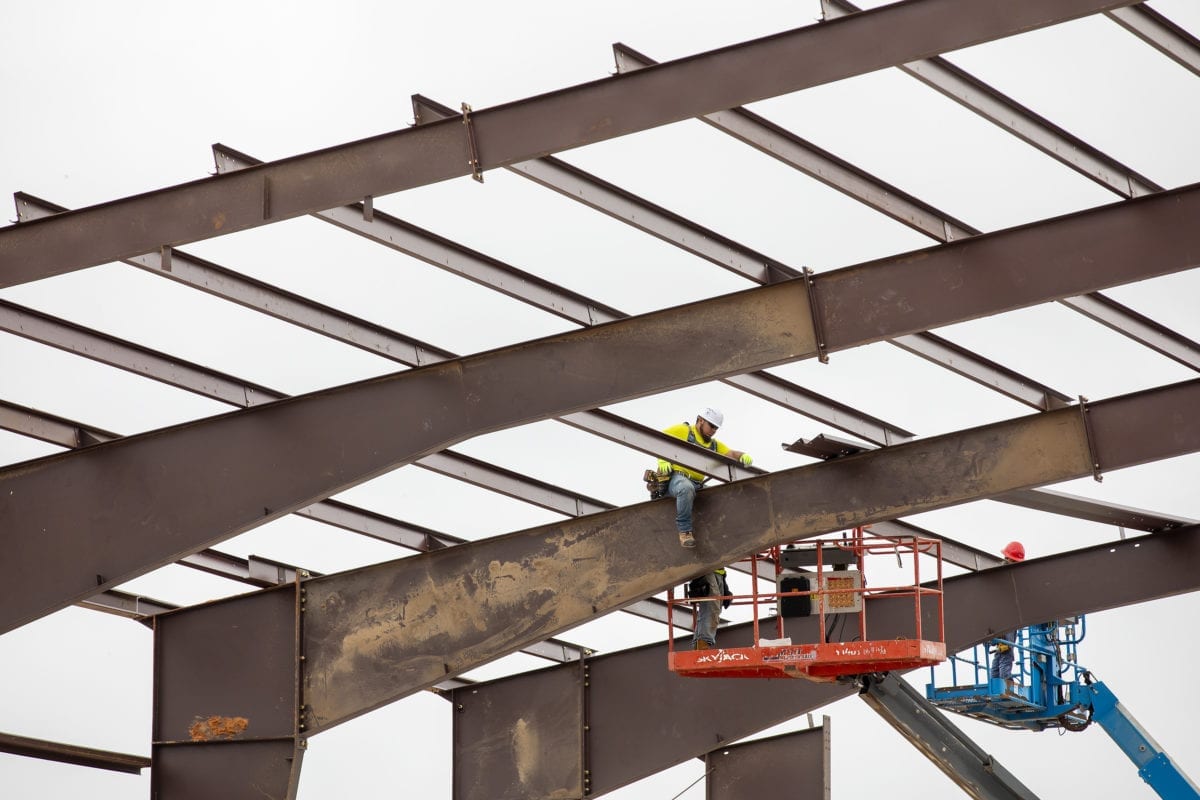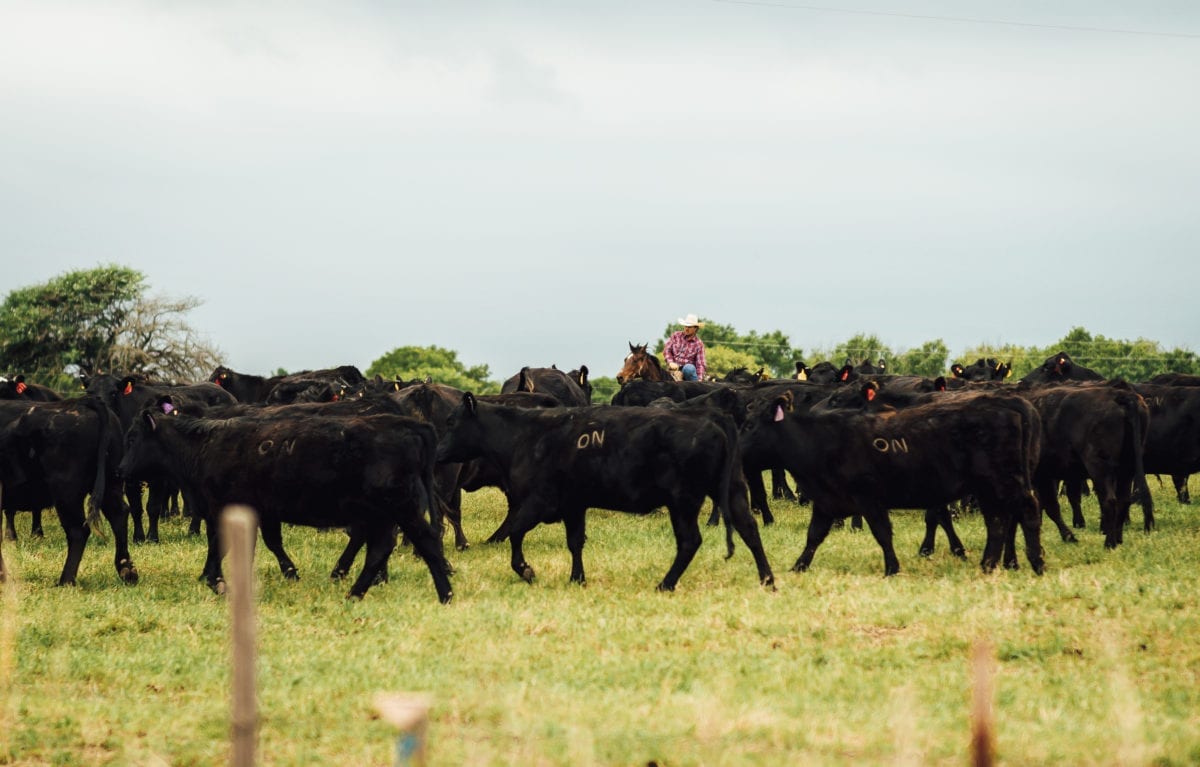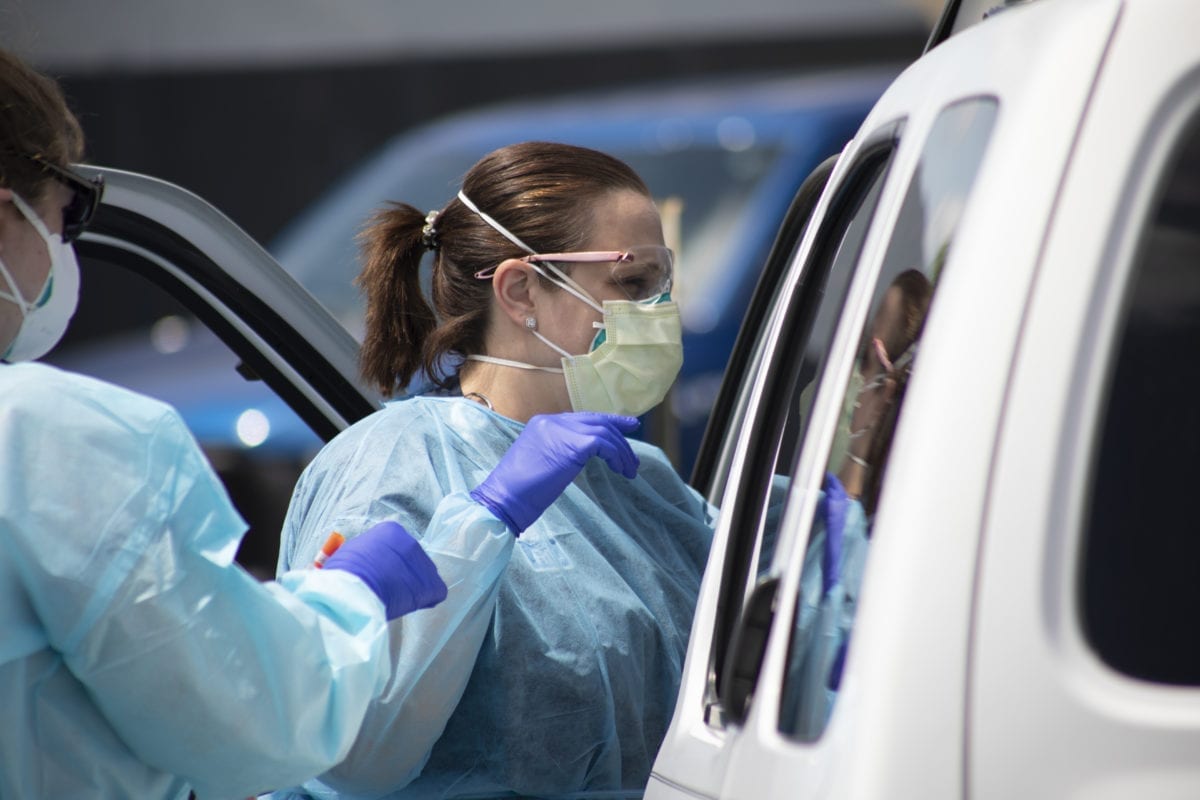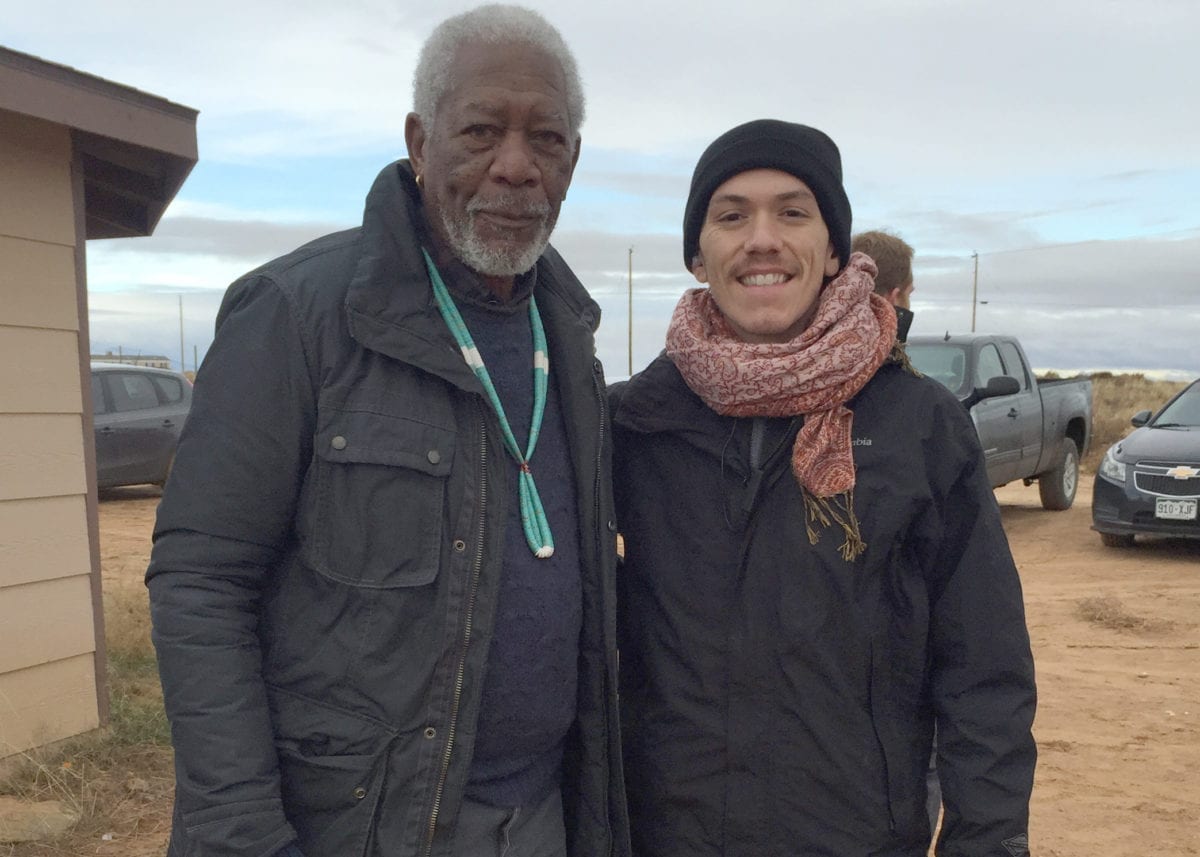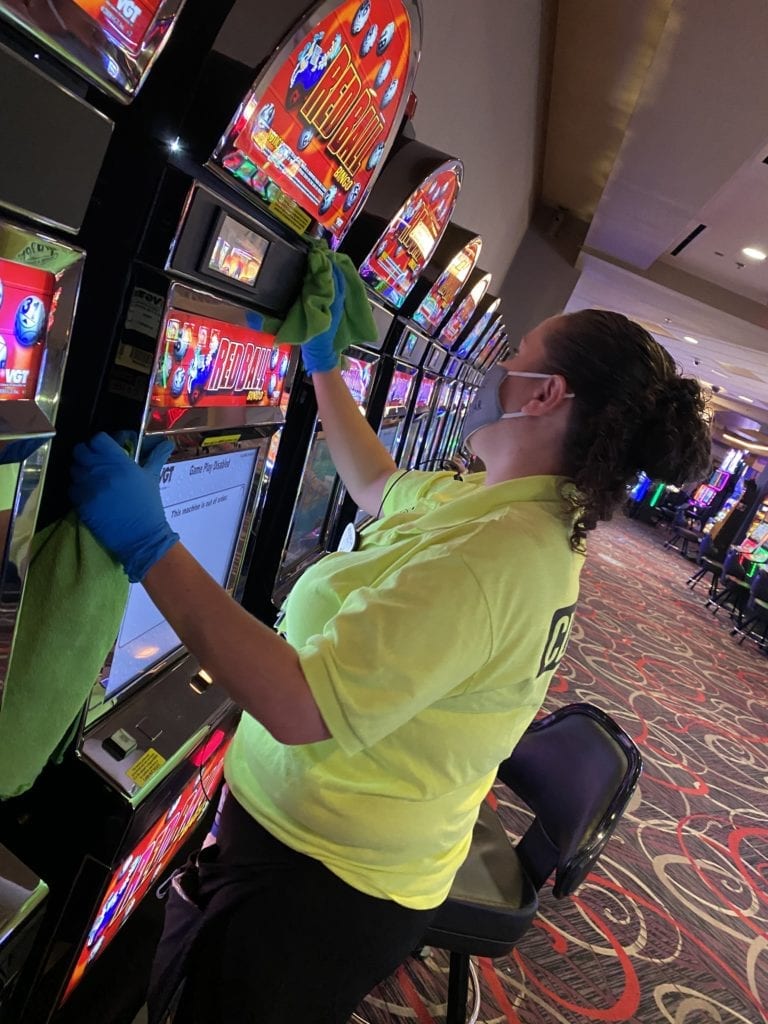Developing Infrastructure
Iron Horse is not your run-of-the-mill industrial park, says James C. Collard, director of economic development for the Citizen Potawatomi Nation.
When the Canada-based Pro Pipe opens its $5.5 million factory at the tribal-owned park later this year, it will be doing so in the only active foreign trade zone on Native American land, says Collard.
Pro Pipe will employ about 50 people to begin with, primarily creating polyethylene pipe for the oil patch. It will be the first plant to open at the 700-acre park just south of Shawnee, and Collard says the tribe is in discussions with a company in Israel, and several others in Canada.
For the industrial park partners, “the benefit package is enormous,” says Collard.
Companies that bring raw products and parts to a U.S. factory must pay a tariff assessment, says Collard. But if a factory is in one of the 250 foreign trade zones in the United States, the tariff is not paid until manufacturing is complete, and the tariff is less.
“You get to hold on to your money a lot longer,” says Collard, a McAlester native who came to the tribe 12 years ago after a career in city management.
Iron Horse is a magnet zone through Foreign Trade Zone 106 at Will Rogers World Airport. Collard expects the park to eventually offer 10 warehouses and 10 plants, which the tribe will build and lease to the partners.
The tribe obtained a $2.5 million grant from the U.S. Department of Commerce to build a trans-loading facility, where products can be shifted from trucks to the rail line that runs through Iron Horse, or from the railroad to trucks, for shipment back and forth from the Port of Houston.
But, says Collard, “Iron Horse is not just about trade. It’s about global acceptance and inclusiveness. Trade is an important path to peace.”
The Osage Museum in Pawhuska, which principal chief Geoffrey Standing Bear explains is the oldest tribal museum in the nation, is about to get larger.
The expansion project, recently awarded to Tulsa firm Selser Schaefer Architects, was prompted in part by the tourism that centers around the Pioneer Woman Mercantile. Many visitors are also drawn due to Killers of the Flower Moon: the Osage Murders and the Birth of the FBI, the account of the 1921-26 murders of nearly 20 Osage people for access to their oil money.
“Our families have donated traditional items, photos and documents from the time period of Killers of the Flower Moon,” says Standing Bear. “The display space will be at least twice as large.”
The tribe has also rebuilt community centers in Hominy and Greyhorse, and is in the design phase for a new center in Pawhuska.
“They are used primarily to support our traditional dinners associated with our traditional dances,” says Standing Bear. “They are very important to us.”
Standing Bear says his tribe is also building a second tower at the Tulsa Osage Casino and Hotel that will double its hotel space. As of now, the tribe has seven casinos, and hopes to soon replace the small casinos in Pawhuska and Bartlesville with casino hotels.
Complications and Innovations of COVID-19
The Osage Nation is using its federal COVID-19 relief funds to benefit the tribe and the state in the long-term, says principal chief Geoffrey Standing Bear.
At its ranch near Pawhuska, the tribe has about 3,000 head of cattle and 90 bison. After the pandemic hit and members needed help with food, suppliers could not provide all the meat that was ordered, and the tribe couldn’t use its own cattle because no beef processor was available.
“So, we are using federal money to build a meat processing plant in Hominy,” says Standing Bear.
The tribe is also using relief funds for broadband improvement. Rural Oklahoma’s gaps in internet coverage became even more evident when employers and schools moved online during the early days of COVID-19, Standing Bear says, and the Osage Nation is partnering with the city of Pawhuska and other local governments to share the costs of upgrades.
Del Beaver, second chief of the Muscogee (Creek) Nation, says his tribe is also updating its technology infrastructure in the wake of COVID-19.
After the pandemic hit, “that was the first thing we recognized, that we needed to get with it,” says Beaver. “We have 25 communities around the Creek Nation, and a lot of them are in rural areas. We didn’t even have good cell phone reception at some of them.”
Relief dollars have helped the Cherokee Nation roll outs its Respond, Recover and Rebuild program, says principal chief Chuck Hoskin Jr.
“We have some amazing men and women working for the Cherokee Nation,” he says. “They were out in the communities, marshaling resources, going to elders’ homes.”
Essential employees received hazard pay, says Hoskin, and those who worked from home were given telework stipends.
A $40 million education package will include grants to schools, and Cherokee students will receive $400 technology stipends. Clothing vouchers will be increased.
Muscogee (Creek) Nation staff members are providing services over the telephone whenever possible.
“That goes against everything we are used to,” says Beaver. “We like having our citizens come here, where we can talk to them face to face. But our priority is the safety of our employees. I don’t see us lifting that for a while.”
Elderly nutrition programs switched from hot meals to curbside pickup, and others are picking up orders from three food distribution centers. Requests for food assistance have nearly doubled since the pandemic began.
“On Good Friday, we distributed food care packages to over 2,500 families,” says Jason Salsman, press secretary for the Muscogee (Creek) Nation.
Investing in the Youth
Oklahoma’s tribal nations set up their youth for success with native language training, scholarship programs and cultural enrichment, tribal leaders say.
The Muscogee (Creek) Nation is marking the five-year anniversary of its Muscogee National Youth Council for ages 12 to 24 years.
“When the pandemic hit, the youth made masks and sent some to the Navajo Nation,” says David Hill, the nation’s principal chief.
“They elect their own officers and have their own policies,” says second chief Del Beaver. “They are always doing something. They have their own social media pages.”
Muscogee youth also can join the Lighthorse Explorers Program, where they learn about law enforcement and serve at public events, with parking and helping elders to their seats.
The Osage Nation offers classes to help high school students with college entrance exams, says principal chief Geoffrey Standing Bear.
“And the big one we’ve had for some years is our higher education scholarship program,” he says. “Every Osage, no matter their age or where they live, we will pay tuition and book money up to about $9,000 a year.”
The Nation disperses about 1,000 scholarships every year, the chief says, and many are adults whose higher education was put on hold for a time.
“It is not unusual to see a parent and their child, at the same time, receive a diploma,” says Standing Bear. “It happened in my family. My wife and one of my sons graduated together. It was really amazing to see.”
Native Representation in the Media
Oklahoma natives with creative talent continue to distinguish themselves in the arts, tribal leaders say.
“A lot of our citizens are getting involved in documentary filmmaking, the visual arts and graphic art, and creating pieces for the Red Stick Gallery in Okmulgee,” said Jason Salsman, press secretary for the Muscogee (Creek) Nation.
Thlopthlocco Creek citizen Kyle Bell, 33, a Glenpool native who lives in Tulsa, was chosen in February for the Rolex Mentor and Protégé Arts Initiative, which pairs up-and-coming talent with celebrated filmmakers. Bell is being mentored by cinema legend Spike Lee.
Bell is a filmmaker who has worked on the team of the Emmy-winning Osiyo: Voices of the Cherokee People, and who made a documentary about the Standing Rock Indian Reservation entitled Defend the Sacred. Last year, he was selected for the Sundance Institute Native Filmmakers Lab.
The Muscogee National Youth Council started an apprenticeship program about a year ago, says David Hill, the Muscogee (Creek) Nation’s principal chief. Tribal artists teach classes to the young people in fashion design, sculpture, drawing, painting and woodworking.
The Formidable Ezekiel Walker
Ezekiel Walker, an Oklahoma native and member of the Chickasaw Nation, is very much aware that Native Americans have been stereotyped and portrayed inaccurately on the big screen. But he says his mission as a TV/film producer in California has a forward focus, rather than trying to go back and correct history’s mistakes.
The 36-year-old says his elders taught him “to know that you are a conqueror, and to be a warrior. If you are a warrior, it doesn’t matter what people think of you.”
Walker has programs for the Travel Channel, the History Channel and National Geographic. He was involved with NBC’s The Biggest Loser, and worked on the first season of The Story of God with Morgan Freeman, which features a sacred Navajo ceremony never before filmed.
He’s also a businessman, and with those earnings he wants to bring some of his own ideas to fruition.
“I want to invest in my own film and TV content,” he says. “I have some ideas about Native American storytelling.”
He says he’s appreciative of what the tribes are doing to preserve their histories, but he also wants modern day stories to be told.
“I grew up around my dad’s side of the family, hearing them speak Chickasaw,” he says. “I grew up understanding that we were strong people, and resilient. I saw family values, and I saw the importance of respecting my elders.”
With the Walkers, he says, “there was a lot of storytelling that would lead to full-on laughter. No matter how big your problems were, if you were together with family, you were comforted.”
The Mill Creek native was studying graphic design at a city college in Santa Barbara, Calif., when he landed work on a project connected to Kitchen Nightmares with Gordon Ramsey. He started his career as a production assistant.
He wants young people to know that he doesn’t have a high-end degree, and that there are many ways to reach career goals.
“You work hard,” he says. “That’s how you make it in Hollywood.”
He divides his time between Oklahoma and California, and has been staying at his house in Tishomingo during the pandemic. He expects to return to his television projects in September.
“I can’t stop doing things,” he says. “I was walking around Tishomingo looking for what I could do, and I said, ‘Let’s start a wine bar!’”
Mulberry, his wine bar and retail shop, is scheduled to open soon. Go to hellomulberry.com for information.
“By opening a business here, I’m hoping that encourages others that you can do things where you are,” he says. “You just have to seek opportunity.”
Casinos Updates
Oklahoma casinos are expanding, overcoming the challenges of the COVID-19 pandemic and welcoming new customers to play ball and dice games.
These new offerings brought in a different type of gamer, says Del Beaver, second chief of the Muscogee (Creek) Nation.
“Obviously, it has helped us,” he says. “It brought that Vegas-type of atmosphere.”
State and federal laws approved in 2018 allow tribal casinos to now offer games such as craps and roulette.
Osage chief Geoffrey Standing Bear says ball and dice games are not house-banked and the pots are not especially large.
“We were working with the state to bring those games to a more fun version,” he says. “Then the compact wars started. So that’s put a halt on a lot.”
Some tribes have been at odds with Oklahoma Gov. Kevin Stitt as to whether gaming compacts with the state automatically renewed on Jan. 1 of this year, as the tribes maintain, or whether they expired and should be renegotiated. Stitt wants the tribes to pay more for their exclusivity rights.
The Osage Nation has not joined in the lawsuit and has not negotiated any compacts with the state, as some of the tribes have done.
“We would prefer to keep open communications with all the sides,” says Standing Bear. “What we are trying to do is have a form of entertainment where 100% of the profits go to our education, our health, to our elder programs and our youth programs.”
David Hill, Muscogee Creek Nation’s principal chief, says the tribe continued to pay its employees at all the casinos even after they had to be sent home in the spring due to the pandemic.
“The casinos were all open again in June,” says Hill. He says the tribe used some federal COVID-19 relief aid and “spent a lot of money on face masks and sanitizers. We did a lot of cleaning.”






















